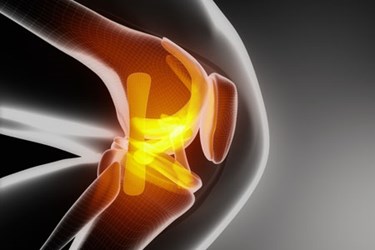New Algorithms Identify Tissue Strain Before Injury Occurs
By Chuck Seegert, Ph.D.

Tissue strain can lead to micro-tears and other injuries that can build up over time, leading to more significant injuries. Identifying weakened spots in tendons, muscles, and bones could help identify an area of the body that is prone to injury. Now, a new method from Washington University in St. Louis (WUSL) may do just that.
Surgical repair of tissues and bones is a time consuming and risky activity to undertake. Often it is followed by lengthy rehabilitation, and recovery time can be extensive. So when repairs like this fail, it is no small matter, especially when there is no clear indicator as to why. In order to increase the odds of a successful surgery in these scenarios, WUSL researchers developed a new method of studying tissue strain, according to a recent press release.
“Tendons are constantly stretching as muscles pull on them, and bones also bend or compress as we carry out everyday activities,” said Stavros Thomopoulos, Ph.D., professor of orthopedic surgery and senior investigator of the research, in the press release. “Small cracks or tears can result from these loads and lead to major injuries. Understanding how these tears and cracks develop over time therefore is important for diagnosing and tracking injuries.”
Details of the team’s efforts are captured in a research study published recently in the Journal of the Royal Society Interface. As described in the study, their newly developed algorithms enhance current optical techniques, allowing researchers to estimate the strain that a tissue is undergoing in a local area in a way that wasn’t possible before. Identifying strain in a local region like this enables the identification of tissue damage. Such tissue damage includes cracks or small tears that, if left unchecked, can lead to greater injury over time.
“If you imagine stretching Silly Putty or a swimming cap with a picture on it, as you pull, the picture becomes distorted,” said John J. Boyle, a graduate student of biomedical engineering at WUSL, in the press release. “This allows us to track how the material responds to an external force.”
“As you pull and stretch the plastic wrap, eventually tears begin to emerge,” Boyle explained in the press release. “The new algorithm allowed us to find the places where the tears were beginning to form and to track them as they extended. Older algorithms are not as good at finding and tracking localized strains as the material stretches.”
The WUSL team believes that the new method may have wider uses in the general engineering field, and they have shown that one of their algorithms may be up to 1,000 times more accurate than previous methods.
“Whether it’s a bridge or a tendon, it’s vital to understand the ways that physical forces cause structures and tissues to deform so that we can identify the onset of failures and eventually predict them,” said Guy Genin, Ph.D., professor of mechanical engineering and co-senior investigator of the study, in the press release.
Studying strain in soft tissues is an area that has been a challenge for many researchers, as they attempt to understand the body and the range of motions that it typically undergoes. Recently, graphene-impregnated rubber bands were used to study strain in scenarios like these.
